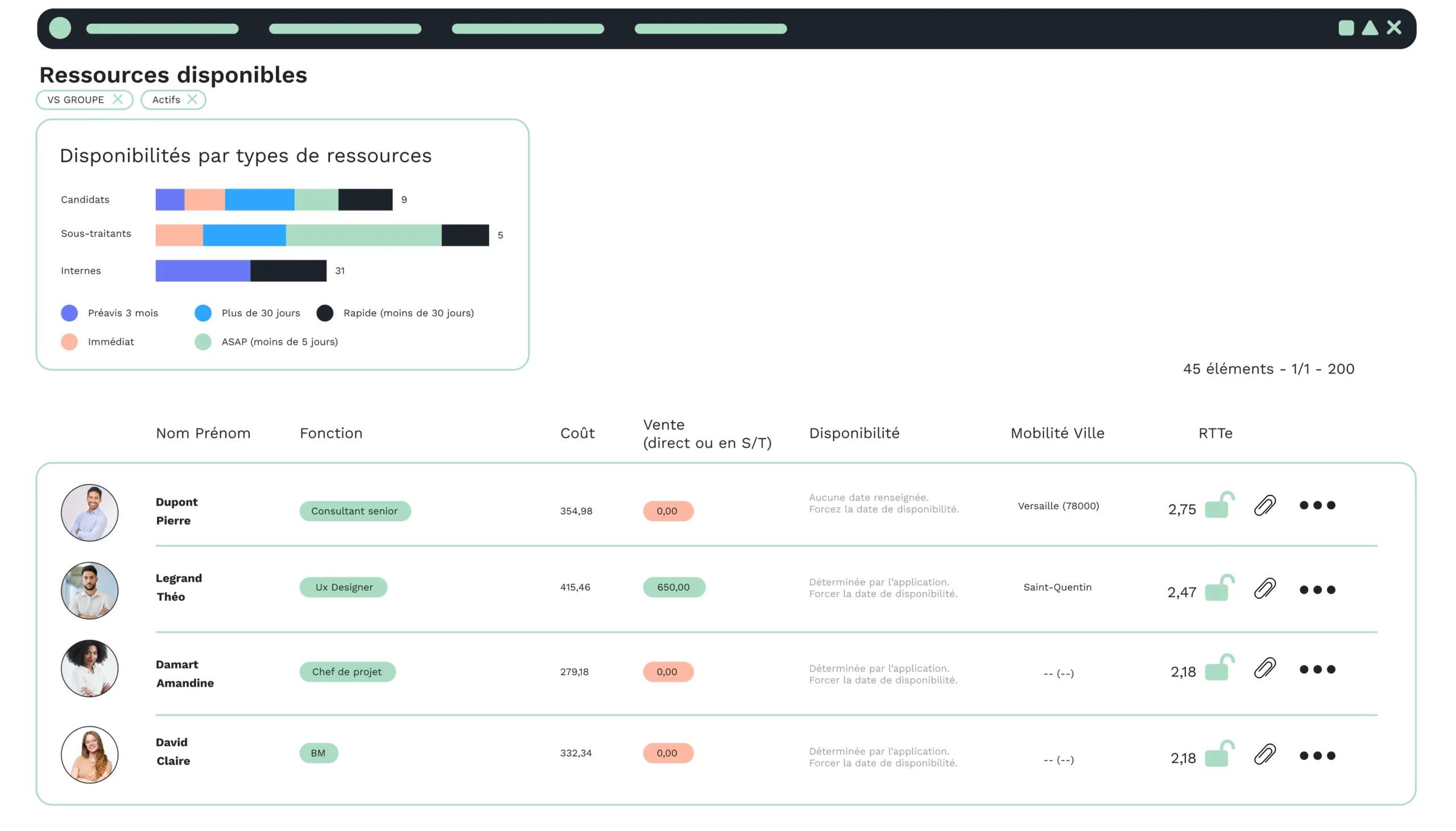Digital transformation here, digitization there, there’s no denying that digital transformation within our companies is making headway. Whether for salespeople, consultants or even HR, it’s all about improving responsiveness, productivity and communication.
In this article, we focus on the digital transformation of the HR function, and more specifically on payroll management.
How to improve payroll management? How to secure your payroll? Or how to set up a payroll process? And all this while improving HR performance.
This is a major challenge for the HR function.
Key figures
In 2019, the main reasons for URSSAF regularizations are “Remuneration not subject to contributions” with 33% of regularizations. This represents a €314 million adjustment.
Exemptions from social security contributions and business expenses are also a significant source of errors, accounting for 19.5% of adjustments for the former and 19.2% of adjustments for the latter.
(Source: contributor control – 2019)
What is payroll management?
Payroll management definition
Payroll management is the process by which employers pay their employees for the work they have done.
This consideration is characterized by the payment of a salary, the proof of which is the so-called “pay slip” or “payslip”.
Payroll management is an integral part of personnel administration. It is mandatory when you have employees, and its process is subject to regulatory changes and collective bargaining agreements.
Generally speaking, Human Resources (or the payroll manager) and Accounting are the main stakeholders in this process.
What are the payroll challenges?
7/10 base accounting checks lead URSSAF to detect an error, resulting in an adjustment.
So, having a quality payroll process is important for companies, because the stakes are not insignificant. And neither are the consequences of making a mistake. First, let’s take a look at what’s at stake in a good payroll process.
Payroll-related regulatory issues
The regulatory framework affecting payroll is constantly evolving. This means that HR or the payroll manager must constantly keep abreast of any updates.
The information to be monitored includes
- To the salary base.
- Contribution rates.
- Company agreements.
- Collective bargaining agreements.
- Employment law.
- Etc.
In fact, the company may be subject to an URSSAF inspection to ensure that social security and unemployment insurance legislation is being properly implemented, not forgetting the accuracy of the declarations made.
The financial challenges of payroll
As payroll management is regulated by legislation, checks can be carried out. These controls can result in financial penalties in the event of error, concealment, fraud, non-compliance and so on.
Inspections are carried out by competent bodies such as URSSAF, Prud’hommes, the Labor Inspectorate, etc.
For example, if an employer fails to provide his employee with a monthly payslip, he may be fined up to €450 for each payslip not received by the employee, and may also have to pay damages.
Payroll confidentiality and security issues
To process the payslip, the company must use certain employee data. This data qualifies as personal and is therefore subject to the GDPR (General Data Protection Regulation).
Added to this, more and more companies are using software to manage personnel administration, such as payroll software, time and activity management software, HRIS, etc.
Employers must guarantee the security and confidentiality of their employees’ personal data.
Internal processes must therefore be established to guarantee the confidentiality of employees’ personal data, and cybersecurity standards taken into account to prevent data leakage.
The most important thing to remember is that payroll management is a compulsory procedure when a company employs people. This process is subject to legislation, company agreements and collective bargaining agreements. Non-compliance with this process has serious financial and reputational consequences for the company.
That’s why the company needs to establish a compliant, high-quality payroll process.
To do this, we first need to analyze the payroll management process in order to understand each of its stages.
How is payroll managed?
There’s more to the payroll process than just sending out pay slips to company employees.
Payroll management is a time-consuming and tedious process, requiring a great deal of rigor.
The process takes place in 5 stages:
- Collecting data related to the employee’s activity.
- Payroll data entry.
- Accounting and payment.
- Transmitting pay slips.
- The Nominative Social Declaration.
Collecting employee activity data
To establish remuneration, the payroll manager must retrieve data relating to the employee’s activity, such as paid vacations, working hours, absences, etc.
To retrieve this information, the manager can access the employee’s activity report, for example, which details all the employee’s activities for the month. This document must be completed by the latter.
This stage can be time-consuming, for example, when you have to follow up to obtain missing data.
Payroll data entry
Salary can be made up of different elements. These variations are one of the factors that make payroll management a tedious business.
In fact, base salary represents 80.3% of gross remuneration and 19.7% are variable components.
These include :
- Employee savings.
- Overtime and complementary hours.
- Bonuses and supplements.
- Compensation for partial unemployment, redundancy, etc.
(source: Structure of remuneration – DARES)
According to a DARES study, 91.9% of employees are concerned by variable compensation.
(source: Structure of remuneration – DARES)
The next step is to enter the data for contributions, not forgetting withholding tax.
Accounting and payment
These are the various accounting entries made for salary payments, deductions and employer charges.
Transmitting pay slips
The pay slip is the proof of salary payment by the employer.
It is issued each month by the company in dematerialized form (unless otherwise specified by the employee).
The production of a payslip is not arbitrary: it must be compliant and contain certain mandatory information.
Employer’s obligations
- The employer must provide the employee with a payslip for each month worked.
- It must be sent in electronic format, unless the employee specifies otherwise.
- The company must keep duplicate pay slips for at least 5 years.
- The company must also guarantee access to the dematerialized payslip for 50 years, or until the employee reaches the age of 75. Otherwise, the employee must be given a paper version, or a guarantee that he or she has received it (against discharge).
Compulsory information on a payslip
- Employer details: name, address, SIRET APE or NAF code.
- Employee information: name, job title, hierarchical level or coefficient.
- The applicable collective bargaining agreement or reference to the Labor Code for CP and notice periods.
- The period and number of hours worked.
- The nature of the salary calculation basis.
- The employee’s gross salary.
- Social security contributions.
- The amount, base and rate of social security contributions (before exemptions).
- The total amount of exemptions from social security contributions and contributions
- The nature and amount of salary variables (bonuses, professional expenses, etc.).
- The nature and amount of other payments (transport costs).
- Vacation pay and date.
- The net amount payable before income tax.
- The amount of income tax.
- The type of rate chosen for the withholding tax and its level.
- Net remuneration.
- Payment date.
- The total amount paid by the employer.
- The amount corresponding to the abolition of employee unemployment and sickness contributions.
- The service-public.fr website dedicated to pay slips.
- Indication concerning the unlimited retention of the payslip.
Nominative Social Declaration (DSN)
What is DSN?
Each month, the company must transmit information to several organizations such as Pôle emploi, URSSAF, CPAM, etc.
This information is transmitted via the Nominative Social Declaration. This file is produced from the company’s payroll data.
The information transmitted concerns :
- Sick leave, maternity leave, paternity leave, workplace accidents, etc.
- Resignation, dismissal, etc.
This is a compulsory monthly procedure, to be carried out by the 5th of the month for companies with fewer than 50 employees, and by the 15th of the month for other companies.
Penalties for forgetting
In the event of late transmission of the DSN, the company may be subject to a penalty of 1.5% of the monthly social security ceiling per employee and per month of delay (capped at 150%).
For companies that fail to carry out this procedure, there will also be financial consequences, i.e. a 0.5% penalty on the monthly social security ceiling per employee.
The maximum amounts vary between €750 and €10,000.
Payroll management is a succession of administrative procedures, data collection and entry. It’s a process that takes time and precision.
In fact, data entry errors can lead to disputes with both the employee concerned and payroll-related organizations.
Data collection requires time to verify reliability and quality.
So we need to be constantly on the lookout for changes in regulations and practices.
In fact, according to a study published by Tissot, 47% of HR managers surveyed want to have the keys to mastering regulatory changes.
This shows that the main obstacle to compliance is the updating of regulatory data.
What’s more, 43% of HR staff would also like to reduce the number of data entry tasks, and in particular re-keying.
The use of digital tools would relieve the payroll manager. Also according to the survey, 86% think that digital tools are useful for payroll.
The benefits of digitizing your payroll
As mentioned above, payroll administration is a very time-consuming job.
It requires a lot of manual data entry, and errors can quickly distort the pay slip.
Payroll digitization is therefore essential to support the payroll process.
To the question “What benefits do you see in using online HR tools/services”, Human Resources responded:
- Save time and increase efficiency.
- Reduced use of paper.
- Accessibility anywhere, anytime.
- Simplifying work.
- Securing processes and data.
- More time to devote to people.
- Adapting to change.
- Knowledge sharing and collaboration.
(Source: Edition Tissot 2021)
The use of digital tools to support the payroll process is beneficial because it makes the process less repetitive, avoids data entry errors and therefore conflicts with the competent bodies and employees.
It’s not for nothing that 80% of those questioned use payroll software.
Obstacles to digitizing payroll
Price remains the main obstacle to implementing a digital payroll solution.
Data security comes second.
There are many offers on the market, with varying prices. What’s more, some solutions guarantee data security through standards and certifications.
Improve your payroll process with VSE
VSE is a SaaS HRIS that centralizes a wide range of data relating to your business, which you can use as a basis for drawing up pay slips.
Indeed, employees declare their expenses, fill in their CRA (Compte Rendu d’Activités or time sheet), their absences, and so on.
VSE allows you to streamline your payroll management process by automatically generating the right payroll data export formats from the information available in your HRIS.
There are several advantages: you save time and avoid data entry errors.
VSE goes even further. VSE is able to track payroll discrepancies from one month to the next, following corrections in declared times, absences, etc. This makes it possible to manage regulations for the following month.
Finally, at the end of the payroll process, VSE enables you to reintegrate your employees’ payslips, making them available online and reintegrating actual payroll data.







